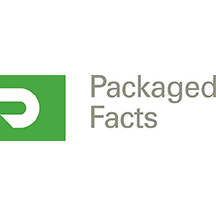 Loyalty programs are gaining popularity among retailers, but are they enough?
Loyalty programs are gaining popularity among retailers, but are they enough?
As retailers begin to realize that coupons and discount deals only attract short-term traffic spikes, they are beginning to emphasize loyalty programs.
This is part of the reason why, compared to other food and non-food retailers (especially the grocery channel), usage of restaurant/coffee shop rewards programs is not as widespread. Indeed, only 8% have used such a program at a restaurant or coffeehouse in the past four weeks, according to Future of Foodservice: Food and Beverage Menu Trends & Opportunities, a report by market research publisher Packaged Facts.
However, the incidence of loyalty point redemption is highest among the most frequent restaurant users, suggesting success in using these programs to incent usage among more frequent patrons. With that knowledge, it becomes essential for restaurant players to better understand exactly what rewards their most loyal customers are most interested in earning.
Consumers prefer a rewards program with a clearly defined proposition in which they earn points or rewards, rather than a program built solely on periodic, surprise free items. Furthermore, it’s important to keep things simple and not make diners have to “work” to earn or keep track of that reward. To that end, technology trends are enabling loyalty programs to be more accessible to users. But while smartphone apps are rapidly becoming the standard among loyalty programs, Packaged Facts data suggests this may not be the most effective way to build loyalty.
Future of Foodservice: Food and Beverage Menu Trends & Opportunities helps restaurant industry participants adapt to and plan for these important consumer trends. With respect to each of these themes, drawing from consumer survey results and menu databases, this report identifies what consumers want on the menu and what motivates them to try menu items. It also assesses the degree restaurant menus are adapting to those consumer wants and needs, and presents forward-thinking guidance on how restaurants can continue to shape their menus to meet them. Each section of the report includes an “outlook” summary providing forward guidance.




